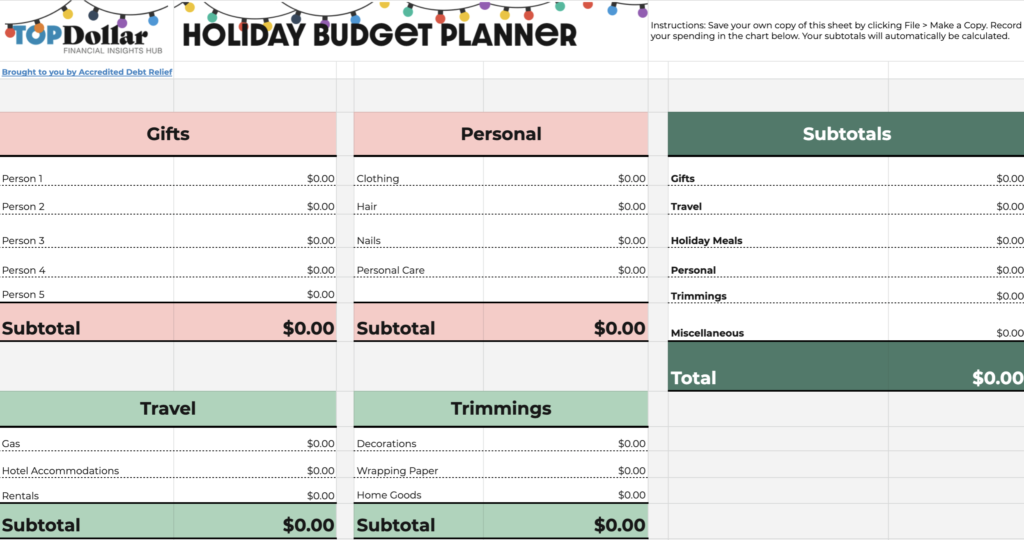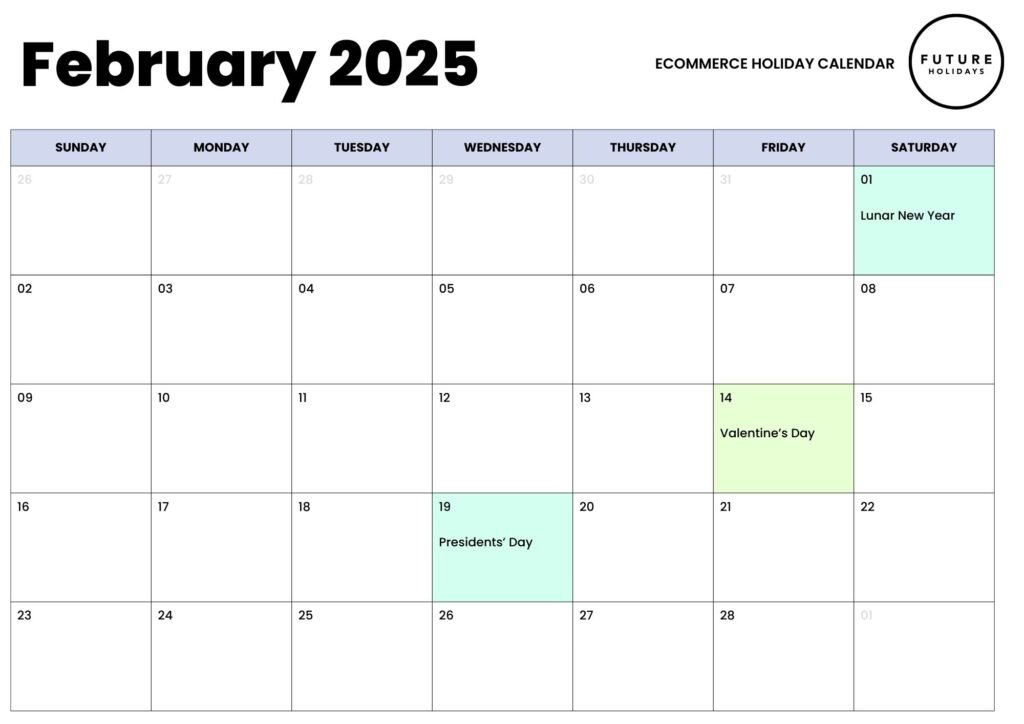12 Smart Ways to Save Money on Your Holiday Budget
My years of experience helping people with their finances have taught me how the holiday season strains your wallet. Gift purchases, travel costs and celebration expenses can spiral quickly without proper planning.

Recent numbers reveal a significant decline in holiday spending. Deloitte’s latest Holiday Report shows shoppers will spend just $1,002 this season, which represents a 19% decrease from last year. Most people (76%) are cutting back on expenses, though 67% still want to enjoy modest holiday treats.
My years of experience helping people with their finances have taught me how the holiday season strains your wallet. Gift purchases, travel costs and celebration expenses can spiral quickly without proper planning.
These practical holiday budgeting tips can make a real difference. You can start by setting aside $50 monthly toward a dedicated holiday fund. Thoughtful handmade gifts could save you up to 50% on your budget. The key is limiting holiday expenses to 1% of your annual income, which lets you celebrate meaningfully without financial stress.
Create a Smart Holiday Budget with Digital Tools

Image Source: RISE Credit
Digital tools make holiday expense management easier. My experience helping people with financial optimization shows that combining apps with AI-powered solutions takes the hassle out of holiday budgeting.
Best Budgeting Apps for Holiday Planning
The right budgeting apps let you sync multiple accounts, track expenses in real time, and customize spending categories [1]. These apps also give you detailed charts and reports about your spending patterns [1]. Your choice of budgeting app should focus on security features – look for 256-bit encryption and multifactor authentication [1].
Setting Category-wise Spending Limits
Your holiday budget control improves when you break it down into specific categories. The key categories should include gifts, travel, decorations, food, and entertainment [2]. Setting spending limits per person helps avoid gift overspending [2]. To cite an instance, digital tools let you assign specific amounts to each category and send alerts before you go over budget [3].
Using AI-powered Expense Tracking
AI-powered budgeting tools have changed holiday spending tracking completely. These systems study your spending patterns and create insights that match your holiday habits [4]. The AI budgeters sort expenses by category and spot unusual spending patterns, which adds extra financial security [4].
AI-powered tracking stands out with these features:
- Real-time expense monitoring with instant notifications
- Automatic currency conversion for international purchases
- Predictive analysis for anticipating future expenses
- Integration with calendars to forecast upcoming costs [4]
This technology adapts to your unique spending style and creates a customized experience that old budgeting methods can’t match [4]. You’ll get the best results by connecting your financial accounts and setting clear priorities during setup [4]. The AI works better once it has access to your personal, travel, and financial details [4].
Check your spending through these digital tools often. You can export expense data to PDF or CSV files from most apps, which helps analyze holiday spending patterns for future planning [5].
Master the Art of Strategic Gift Planning

Image Source: Accredited Debt Relief
Planning holiday gifts needs careful thinking and an organized way to work. My experience helping families manage holiday expenses has shown that a well-planned gift strategy will give both financial savings and more meaningful presents.
Building a Priority-based Gift List
A complete list of potential gift recipients should be your first step, without assigning specific dollar amounts [3]. Your focus should be on ranking recipients by relationship importance rather than costs. Close family members usually rank higher than distant relatives or acquaintances [3]. This method will give your most important relationships the right attention within your budget limits.
Setting Per-person Budget Caps
The next step after setting priorities is to decide realistic spending limits for each category. Studies show that families who look at their monthly income and expenses before setting gift budgets stay within their means [3]. The larger portions of your budget should go to close family members (USD 50-200) while smaller amounts work for extended family or acquaintances (USD 15-50) [6].
Using Price Comparison Tools
Smart holiday shoppers can’t do without price comparison tools. These AI-powered platforms scan billions of products across thousands of merchants [7]. Here are some proven strategies before you make a purchase:
- Verify exact product names and model numbers to ensure accurate comparisons [7]
- Check for membership discounts and available coupon codes [7]
- Factor in shipping costs to determine the true final price [7]
Your holiday budget can stretch further with good planning and smart use of comparison tools. Keeping track of expenses helps you control spending throughout the season [6]. Note that you should assess your gift-giving traditions from time to time – suggesting alternatives like Secret Santa exchanges or family donations to charity can ease financial pressure without losing the holiday spirit [6].
These practical approaches will help you make smarter decisions about holiday spending. Success comes from balancing thoughtful giving with financial responsibility.
Leverage Early Bird Shopping Advantages

Image Source: Future Holidays
Early holiday shopping has become a smart way to save money. My research into shopping patterns shows a big change in how people shop. Nearly 79% of shoppers have started buying their holiday gifts earlier than before [4].
Pre-Black Friday Deals
Big retailers now start their sales long before Black Friday. Target launches its Circle Week sale in early October. Walmart’s Holiday Deals and Best Buy’s 48-hour flash sale follow soon after [8]. These early sales often have better deals than Black Friday. Smart shoppers can get popular items first [9].
Benefits of Advanced Planning
Starting your shopping early helps your holiday budget. Half of American consumers started their 2023 holiday shopping by October [8]. We found two main reasons for this. Early shopping lets you spread costs over several paychecks. Retailers also stock up right after Halloween [10], so you get the best choice of items.
Price Tracking Strategies
These digital tools are a great way to get price alerts:
- Capital One Shopping: Automatically scans multiple retailers and applies available coupons [2]
- Karma: Provides price trend analysis and alerts for restocked items [2]
- Camelcamelcamel: Specializes in Amazon price history tracking, showing lowest and highest prices [2]
These tools combine smoothly with browser extensions and send alerts when prices drop. Last year’s holiday season saw more than one in eight products out of stock [8]. This shows why tracking prices early matters so much.
These tips help you avoid last-minute shopping stress and find better deals. Studies show 51% of early shoppers want to take advantage of discounts [4]. Retailers now offer better prices earlier because they know they have limited time to sell after Black Friday [11].
Maximize Cashback and Rewards

Image Source: Mighty Travels Premium
You can multiply your holiday savings with smart rewards strategies. I’ve found ways to get substantial returns on seasonal spending by analyzing credit card perks and cashback programs.
Best Holiday Shopping Credit Cards
The Wells Fargo Active Cash Card gives you unlimited 2% cash rewards on purchases and a $200 welcome bonus after spending $500 in the first three months [12]. Amazon shoppers can get 5% back at Amazon.com and Whole Foods Market with the Prime Visa [12]. The U.S. Bank Shopper Cash Rewards Visa Signature lets you earn 6% cash back on your first $1,500 in combined eligible purchases each quarter from two retailers of your choice [13].
Cashback App Recommendations
Cashback apps add another layer of savings to your credit card rewards. Rakuten works with over 3,500 retailers in all shopping categories [3]. Ibotta shines with grocery and retail purchases and gives cash back at more than 1,500 brands including CVS, Walgreens, and Target [3]. Capital One Shopping checks prices and tests coupon codes automatically to help you save more [3].
Stacking Rewards Programs
The best savings come from combining multiple reward streams. Start by using a rewards credit card for your purchase. Next, activate your card issuer’s special offers – like Amex Offers, Chase Offers, or Citi Merchant Offers [13]. Last, make your purchase through a cashback portal. This approach can get you up to 20% total cash back on single purchases [13].
These techniques work really well:
- Link store loyalty accounts with cashback apps to save automatically
- Check Cashback Monitor to find the highest portal rates [3]
- Enable browser extensions that apply available coupons automatically
Recent data shows 39% of shoppers will use rewards and cash-back offers for gift purchases this holiday season [14]. Retailers have noticed this trend, and 90% of major brands now have loyalty programs [14]. Smart stacking of these programs helps you cut holiday expenses while buying everything on your list.
Embrace Digital Gifting Solutions

Image Source: Toasty
Digital gifting has altered the map of holiday shopping, with the market reaching USD 349.10 billion in 2022 [15]. My experience as a financial expert shows this transformation happening right before my eyes. Young shoppers lead this trend – 72% of Millennials and 63% of Gen Z now adopt digital gift cards [15].
E-gift Card Strategies
Digital gift cards give you unbeatable convenience for last-minute holiday shopping. The numbers tell an interesting story – 60% of younger shoppers buy gift cards on Christmas Eve or Christmas Day [16]. You won’t worry about shipping problems anymore, which bothers 38% of holiday shoppers [15].
Here’s how to get the most from e-gift cards:
- Pick retailers with big brand selections, like Virgin Experience’s network of 5,100 experiences [17]
- Look into multi-brand options that let recipients choose from 150+ retail partners [6]
- Go for cards that last longer – many now give you three years to use them [6]
Digital Experience Gifts
Virtual experiences have become hot holiday gifts. MasterClass brings you celebrity-led online courses, while The Chef & The Dish lets people cook with professional chefs in real-time [18]. These digital gifts work great no matter where you live and create memories that last.
Virtual Group Gifting Platforms
Group gifting platforms make holiday giving simple. GroupTogether helps you:
- Set contribution amounts privately [6]
- Keep all messages in one place [6]
- Let recipients split their gifts between different brands [19]
GiftCrowd takes things further by giving access to more than 400 top brands [19]. Presently makes group celebrations easier by handling all buying and delivery details automatically [20].
Gift cards aren’t just for giving – 76% of people see them as a chance for self-treats [15]. Without doubt, digital gifting fits holiday budgets perfectly. You get flexibility, instant delivery, and no shipping costs. These tools often come with tracking features that help you watch your holiday spending better.
Plan Smart Holiday Travel

Image Source: The New York Times
“When it comes to planning, we suggest travelers get started as soon as possible. Booking in the off-season could help make necessary savings, and planning flights at less popular times on weekdays can also help pinch the pennies.” — Greg Wilson, CEO and travel insurance expert at Quotezone.co.uk
Holiday travel costs keep rising. Airfare will likely jump 40% after Halloween [7]. My personal experience has helped me find ways to cut these expenses.
Best Time to Book Holiday Travel
The right timing helps you get affordable holiday flights. Hopper’s data shows Monday, November 22, is the cheapest day to book Thanksgiving flights. Tuesday, December 21, gives you the best deals for Christmas travel [7]. Stay away from peak days like December 22 (Wednesday before Christmas) and December 28 (Tuesday between Christmas and New Year’s) [7].
Travel Rewards Optimization
Smart planning helps you make the most of travel rewards. Here are some proven tips:
- Set up Google Flights price alerts for your travel dates [21]
- Get TSA Pre✓® and Global Entry to skip long security lines [21]
- Choose refundable hotel rates to benefit from price drops [22]
September and October usually have the lowest airfare prices [23]. Booking international flights 60 days ahead gets you the best rates [24].
Budget-friendly Transportation Options
You can save money with different ways to travel. Amtrak trains give you extras like cooked-to-order meals and overnight sleeping cars [25]. Greyhound and Peter Pan Bus Lines work well for shorter trips at lower costs [25].
Local travel can be affordable too:
- City transit systems have good routes with cheap monthly passes [26]
- Bike and scooter sharing helps you save on short trips [26]
- Micro transit gives you flexible routes that cost less than Uber or Lyft [26]
Renting cars from downtown locations saves you about USD 126.00 compared to airport rentals [25]. Flying to smaller airports near big cities can cut costs. You might pick Ft. Lauderdale or West Palm Beach instead of Miami [7].
Pack light with just carry-ons to save on baggage fees and help the environment [7]. Bring your own snacks and a reusable water bottle since some airports still run with limited services [7].
Host Budget-friendly Celebrations
Recent surveys show that millennials spend an average of USD 760.00 on holiday parties, and many end up in debt [9]. I found that there was a way to host great celebrations without breaking the bank as a financial expert.
Digital Party Planning Tools
RSVPify makes event organization smooth with automatic reminders and confirmations [27]. The platform lets you customize registration forms and communicate easily with guests. Planning Pod gives you 20+ integrated tools to manage every part of your celebration, from guest lists to budget tracking [28].
Cost-sharing Apps for Group Events
Modern apps make expense sharing simple among party guests. Tricount changes all purchases to a single currency and adjusts each person’s share automatically [29]. KittySplit needs no sign-up and helps settle shared expenses quickly [30]. Settle Up shines with features like:
- Multiple-payer expense tracking
- Live currency conversion
- Offline functionality
- Ultrasound-based nearby device sharing [31]
Virtual Celebration Ideas
Virtual gatherings are a chance to save money while hosting great parties. These strategies work well:
- Start a virtual cooking session where everyone makes holiday treats together
- Run themed trivia contests using platforms like Kahoot!
- Build collaborative holiday playlists through Spotify [32]
Your celebration costs drop when you schedule during off-peak times. Weeknight parties or weekend brunches lower expectations for fancy meals and expensive drinks [9]. A potluck format works great – you make the main dish and guests bring specific items to avoid duplicates [9].
Natural elements like painted pinecones or evergreen boughs make beautiful decorations [9]. Dollar stores sell reusable party supplies that cost less than throwaway items [9]. Candles and simple ornament arrangements boost the atmosphere and create elegant centerpieces under USD 10.00 [9].
Note that store-brand items usually cost 40% less than name brands [9]. Making your own vegetable platters and appetizers saves more money than buying pre-cut ones, and the quality stays high [9].
Use Technology for Deal Hunting

Image Source: EXECUTIVE PERSPECTIVES – WSJ
Price tracking tools have changed how we shop during holidays by giving us better control over our spending. My research in consumer finance has helped me find the best digital tools that can help you save money during the holidays.
Price Alert Tools
Camelcamelcamel stands above other price tracking platforms and gives detailed Amazon price history data [8]. This tool shows historical highs, lows, and price changes that help you make smart buying choices. Karma sends you quick alerts when prices drop on items you watch [8]. Capital One Shopping looks at prices across many stores and adds available coupons to help you save more [8].
Browser Extensions for Savings
Browser extensions have made deal hunting easier than ever. Honey users save an average of USD 126.00 each year as it tests coupons automatically [33]. RetailMeNot’s Deal Finder works with more than 20,000 stores including Target, Macy’s, and Lenovo [34]. These tools come with great features:
- Automatic coupon code testing
- Price comparison across multiple websites
- Cash back opportunities at eligible retailers
- Product review analysis to spot real ratings [34]
Deal Aggregator Websites
TravelPirates shows how modern deal sites should work. Expert deal hunters check discounts on flights, hotels, and vacation packages by hand [35]. Going.com, which used to be Scott’s Cheap Flights, sends premium flight deals right when they pop up [36]. These platforms shine because they offer:
- Immediate price updates
- Hand-verified discount authenticity
- Detailed price comparisons
- Instant deal notifications [35]
Money worries affect 53% of shoppers this holiday season [2]. As a result, 36% of people now make use of AI-powered tools to find the best deals, while 32% use these tools to compare prices [2]. Amazon’s smart algorithms change prices many times each day based on competitor pricing, demand, and stock levels [2].
Turn on browser notifications to get quick alerts about price drops. You might want to install several tools that work together, but watch out for too many location-tracking apps as they can drain your battery [37]. These digital tools can make holiday savings much easier when you use them the right way.
Implement the 24-Hour Rule

Image Source: CardRates.com
“Do your best to avoid impulse buys.” — FSCB, Financial institution
Studies show that between 40-80% of all purchases happen on impulse during holiday shopping [38]. My experience in financial planning has shown how the 24-hour rule helps prevent these unplanned expenses.
Psychology of Impulse Buying
Holiday festivities increase impulsive shopping behaviors, which emotional triggers and store environments drive [4]. The average U.S. consumer buys 2-3 items on impulse each week, spending USD 5,400 yearly [4]. People make these decisions from sudden emotional desires with little rational thought.
Digital Wishlist Strategy
Wishlists help control impulse spending. About 63% of buyers make use of retailer online wishlists when buying gifts [39]. You can maximize your wishlist’s effectiveness by:
- Enabling sharing features for family and friends
- Monitoring most-wished-for items to make better decisions
- Reviewing wishlist items to track price changes [40]
Mindful Spending Techniques
The 24-hour rule works especially when you have purchases under USD 500. You need one day to think it over [41]. Larger purchases between USD 1,000-1,500 need a 48-72 hour waiting period [41]. This helps you review whether the item fits your holiday budget and needs.
Your emotional state affects spending decisions. Shoppers often feel anxious before buying and relieved after the purchase [11]. Before you buy anything, ask yourself these questions:
- Why am I here?
- How do I feel?
- Do I need this?
- How will I pay for it?
- Where will I put it? [11]
These mindful spending techniques will help reduce your holiday impulse purchases. Evidence shows that compulsive buying affects 5-6% of the U.S. population [11]. This highlights why thoughtful spending habits matter.
Create Multiple Income Streams
Extra income streams can give you more financial freedom during the holidays. My research into various money-making chances reveals several proven ways to boost your holiday budget.
Holiday Side Hustle Ideas
Gift wrapping services can be a profitable seasonal chance, with professional wrappers earning up to USD 180 per hour [10]. Winter vacations create a high need for pet sitters, and platforms like Rover and Meowtel let you set your own schedule [42]. Food delivery becomes extra profitable during holidays – DoorDash drivers make USD 22-33 per hour on average [43].
Online Money-making Opportunities
Freelancing platforms give you access to many income sources. Writers can find projects on ProBlogger and Upwork, while virtual assistants help small businesses with admin tasks [44]. Content creators can make good money through affiliate marketing – one blogger reports USD 40,000 monthly earnings through affiliate links, sponsored collaborations, and online courses [45].
Passive Income Sources
Smart investments can bring steady returns without much ongoing work. Here are some proven ways:
- Dividend-paying assets give quarterly payouts
- Real estate investments create rental income
- Digital products generate continuous revenue [12]
Print-on-demand businesses don’t need any upfront inventory costs. You just design custom products and let services handle the rest [46]. Teaching online courses has also become profitable – the coaching industry is worth USD 4.50 billion worldwide [44].
Your best bet is to vary your income streams. This creates a reliable financial foundation and cuts down reliance on single sources [12]. Take time to assess each chance’s time requirements and potential earnings. Some seasonal jobs, like holiday light installation, can bring in USD 700 for two hours of work [10], while others might need more time for similar pay.
Note that you should keep detailed records of extra income for taxes. By picking the right mix of income streams, you can cover your holiday expenses and build lasting financial stability.
Build an Emergency Holiday Fund

Image Source: Bankrate
Your financial stability depends on setting money aside for holiday expenses. My experience in financial planning shows that a separate holiday savings account keeps your regular savings safe from seasonal spending.
Automated Savings Methods
You won’t have to think about manual transfers when you automate your holiday savings. This ensures you keep contributing regularly [47]. You can pick a schedule that works with your budget and goals when you set up automated savings [47]. Your paycheck can go straight to your holiday fund if you split your direct deposits [47].
High-yield Savings Options
High-yield savings accounts (HYSAs) give you better Annual Percentage Yields (APYs) to help your holiday fund grow faster [48]. Before you open an account, review these key points:
- Federal deposit insurance coverage (FDIC/NCUA) up to USD 250,000 [48]
- Digital security features and fraud protection measures
- Monthly maintenance fees and minimum balance requirements [48]
Right now, many HYSAs pay more than 4% APY [49]. This is a big deal as it means that traditional savings accounts only average 0.46% [3]. To see what this means, saving USD 200 monthly for 10 months at 4.5% APY gives you USD 2,240.87 [3].
Emergency Fund Calculators
Digital calculators help you figure out how much to save for holidays based on:
- Previous years’ spending patterns
- Predicted holiday expenses
- Current income and budget constraints [50]
These tools look at different situations, from car repairs to medical emergencies [50]. A USD 500 savings cushion helps cover unexpected holiday costs without going into debt [50]. Saving USD 10 weekly adds up to more than USD 500 yearly [50].
Your holiday funds should stay separate from regular emergency savings to keep your finances on track [3]. This way, you won’t accidentally use up your emergency money [3]. Many banks let you create savings vaults or sub-accounts to organize your money better [3].
Plan for Post-Holiday Recovery

Image Source: MyFBAPrep
Many households feel the financial squeeze after the holidays when they push their budgets too far. My years of helping families bounce back from holiday spending have shown that a well-laid-out recovery plan makes all the difference.
January Budget Planning
Your first step is to review holiday expenses and map out your January spending. Research shows that holiday overspending leads to lasting money problems [51]. Start with a clear picture of your holiday debt and know the minimum payments needed for each credit card [14]. A zero-based budget could work best here – every dollar needs a job [52].
Debt Management Strategies
Here are two proven ways to tackle holiday debt:
- The Snowball Method: Pay off your smallest balance first while keeping up minimum payments on other cards [14]
- The Avalanche Method: Target debts with highest interest rates to cut down total interest costs [14]
Setting up automatic payments helps you stay on track and protects your credit score [14]. A debt consolidation loan might help if high interest rates slow you down [53]. Several credit card companies now give balance transfer deals with 0% introductory APR [54].
Future Holiday Savings Plan
Next year’s holiday prep starts now. An automatic monthly transfer of just USD 50 to a holiday savings account adds up to USD 600 by December [55]. High-yield savings accounts pay over 4% APY right now [13], making them perfect for growing your holiday fund.
A close look at this year’s spending patterns helps prevent future money stress [56]. Break down your expenses into gifts, travel, decorations, and entertainment [52]. These numbers will help you set realistic limits for next season. A sinking fund strategy works well – you save small amounts all year for specific holiday costs [53].
Note that your January budget needs regular checkups and tweaks [56]. Your commitment to this recovery plan builds stronger money habits for future holidays. Budget apps make expense tracking easier and show where you might save more [51].
Data Table
| Tip Name | Key Tools/Methods | Potential Savings/Benefits | Implementation Timeline |
|---|---|---|---|
| Create a Smart Holiday Budget | AI-powered budgeting apps, 256-bit encrypted tools, Category-wise tracking | Live expense monitoring, Automatic categorization | Immediate setup required |
| Become Skilled at Strategic Gift Planning | Priority-based lists, Price comparison tools | USD 50-200 for close family, USD 15-50 for acquaintances | 2-3 months before holidays |
| Utilize Early Bird Shopping | Price tracking tools, Pre-Black Friday sales | Up to 79% of shoppers save through early shopping | October-November |
| Maximize Cashback and Rewards | Credit cards, Cashback apps, Reward stacking | Up to 20% total cashback on purchases | Year-round |
| Adopt Digital Gifting | E-gift cards, Virtual experiences, Group gifting platforms | Market size of USD 349.10 billion | Last-minute friendly |
| Plan Smart Holiday Travel | Price alerts, Travel rewards, Alternative transport | 40% savings on pre-Halloween bookings | 60 days before travel |
| Host Budget-friendly Celebrations | Digital planning tools, Cost-sharing apps | Average budget USD 760 for millennials | 2-4 weeks before event |
| Use Technology for Deal Hunting | Price tracking extensions, Deal aggregators | Average USD 126 annual savings with Honey | Year-round |
| Implement the 24-Hour Rule | Digital wishlists, Mindful spending techniques | Prevents USD 5,400 annual impulse purchases | Immediate implementation |
| Create Multiple Income Streams | Freelancing, Side hustles, Passive income | USD 22-33/hour (delivery services) | 1-3 months setup |
| Build an Emergency Holiday Fund | Automated savings, High-yield accounts | 4.5% APY on savings | 10 months before holidays |
| Plan for Post-Holiday Recovery | Debt management strategies, Zero-based budgeting | Varies based on debt consolidation | January implementation |
Closing argument
Smart holiday budgeting needs a balanced approach between enjoying celebrations and keeping your finances stable. I’ve spent years helping people manage their money, and I’ve seen that holiday budgeting works best when you combine careful planning with smart execution.
You’ll find twelve practical strategies here that can help you reach your holiday financial goals. Digital budgeting tools make expense tracking simple, and thoughtful gift planning helps you give meaningful presents without breaking the bank. You can save more throughout the season by shopping early, maximizing rewards, and using tech to find the best deals.
Digital gifts have become a huge market worth $349.10 billion and offer a convenient alternative to traditional presents. Your wallet will thank you when you plan travel smartly, choose budget-friendly celebrations, and use mindful spending techniques like the 24-hour rule. A strong financial foundation comes from building emergency funds and creating extra income streams.
People want to spend around $1,002 this holiday season – that’s nearly 19% less than previous years. This move shows growing financial awareness, yet 67% of people still enjoy small holiday splurges. These strategies can help you find the perfect balance between festive celebration and financial responsibility.
Your success depends on making smart choices throughout the season. Want to take a closer look at these money-saving strategies? Visit Vorelia.com for detailed guides and expert resources that fit your holiday budgeting needs.
Note that holiday budgeting isn’t about cutting back – it’s about making smart decisions so you can celebrate happily while protecting your financial future. Start using these strategies today, and you’ll create a holiday season that’s both unforgettable and financially sound.
Want to Dive Deeper? Explore Our Best Blogs:
• 🥣 15 Best Smoothie Bowls That Actually Keep You Full – 2025 Guide – Read Here
• ⏳ 15 Proven Strategies to Beat Procrastination – Backed by Science – Read Here
• 🏋️ Upgrade Your Home Workout with the Best Budget Treadmills – Read Here
• 🧑💻 Affordable Quantum-Inspired Accessories for Tech-Savvy Young Professionals – Read Here
FAQs
Q1. What’s a realistic holiday budget for 2025? The average holiday spending is expected to be around $1,002 per person in 2025, which is about 19% less than previous years. However, your budget should be based on your individual financial situation and goals.
Q2. How can I save money on holiday gifts without seeming cheap? Consider strategic gift planning by creating a priority-based list and setting per-person budget caps. You can also leverage early bird shopping advantages, use price comparison tools, and embrace digital gifting solutions like e-gift cards or virtual experiences.
Q3. What are some effective ways to avoid overspending during the holidays? Implement the 24-hour rule for purchases to curb impulse buying, use technology for deal hunting, and create a smart holiday budget using digital tools with category-wise spending limits. Also, consider hosting budget-friendly celebrations and planning smart holiday travel.
Q4. How can I earn extra money for holiday expenses? Create multiple income streams through holiday side hustles, online money-making opportunities, or passive income sources. For example, gift wrapping services can earn up to $180 per hour, while food delivery drivers average $22-33 per hour.
Q5. What should I do to recover financially after the holidays? Plan for post-holiday recovery by creating a detailed January spending plan, implementing debt management strategies like the Snowball or Avalanche methods, and setting up a future holiday savings plan. Consider automating monthly transfers to a dedicated holiday savings account for next year.
References
[1] – https://www.forbes.com/advisor/banking/best-budgeting-apps/
[2] – https://www.wns.com/perspectives/articles/articledetail/1338/4-ai-powered-trends-driving-the-2024-holiday-shopping-season
[3] – https://www.experian.com/blogs/ask-experian/where-to-put-holiday-savings/
[4] – https://www.psychologytoday.com/us/blog/biology-development-and-behavior/202311/the-holiday-shopping-mind
[5] – https://www.bankrate.com/credit-cards/travel/best-travel-budget-apps/
[6] – https://www.grouptogether.com/us
[7] – https://www.rd.com/article/holiday-travel-tips/
[8] – https://thepointsguy.com/travel-gear/shopping-price-trackers/
[9] – https://www.fidelity.com/learning-center/smart-money/holiday-party-ideas
[10] – https://www.cnbc.com/2024/12/24/profitable-side-hustles-to-make-extra-cash-during-the-holidays.html
[11] – https://www.nbcnews.com/better/pop-culture/compulsive-spending-how-avoid-impulse-purchases-holiday-season-ncna942301
[12] – https://protectwealth.com/creating-multiple-income-streams-why-it-matters-and-how-to-get-started/
[13] – https://www.citizensbank.com/learning/get-back-on-track-financially.aspx
[14] – https://credevolv.com/essential-strategies-for-tackling-post-holiday-debt/
[15] – https://www.justuno.com/blog/gift-card-strategy/
[16] – https://blackhawknetwork.com/resources/3-essential-steps-set-your-gift-card-program-success-holiday
[17] – https://www.virginexperiencegifts.com/online-experiences
[18] – https://www.rollingstone.com/product-recommendations/lifestyle/best-digital-gifts-1235190800/
[19] – https://www.giftcrowd.com/group-gifting/
[20] – https://getpresently.com/
[21] – https://www.giveadayglobal.org/10-holiday-tips-to-travel-smart/
[22] – https://www.the-independent.com/travel/news-and-advice/holiday-book-cheap-best-time-b2632996.html
[23] – https://www.travelandleisure.com/travel-tips/when-to-book-flights-for-cheapest-airfare
[24] – https://www.kiplinger.com/personal-finance/travel/best-time-to-book-holidays
[25] – https://www.thetravel.com/cheap-ways-to-travel-with-a-low-budget/
[26] – https://georeentryconnect.com/blog/affordable-transportation-options/
[27] – https://rsvpify.com/holiday-party-planning/
[28] – https://www.planningpod.com/
[29] – https://tricount.com/en-us/expense-tracker-use-cases/holidays
[30] – https://kittysplit.com/
[31] – https://apps.apple.com/us/app/settle-up-group-expenses/id737534985
[32] – https://www.outbackteambuilding.com/blog/virtual-holiday-party-ideas-for-work/
[33] – https://www.cnbc.com/select/best-browser-extensions-save-money-online-shopping/
[34] – https://www.cnet.com/tech/services-and-software/looking-for-the-lowest-price-let-these-browser-extensions-and-apps-do-the-work-for-you/
[35] – https://www.travelpirates.com/
[36] – https://www.nomadicmatt.com/travel-blogs/find-travel-deals/
[37] – https://www.nbcnews.com/business/consumer/shop-smart-best-apps-help-you-save-holiday-season-n472121
[38] – https://pmc.ncbi.nlm.nih.gov/articles/PMC8206473/
[39] – https://www.qeretail.com/blog/6-ways-to-utilize-wish-lists-holiday-marketing-strategies
[40] – https://www.entrepreneur.com/growing-a-business/how-to-use-wishlists-to-boost-your-holiday-sales/342864
[41] – https://travelingboy.com/travel/the-24-48-and-72-hour-rule/
[42] – https://www.riograndecu.org/holiday-side-hustles
[43] – https://www.cnet.com/personal-finance/4-expert-approved-side-hustles-just-in-time-for-the-holidays-and-beyond/
[44] – https://www.forbes.com/sites/rachelwells/2024/12/10/7-remote-side-hustles-you-can-start-with-no-money-in-2025/
[45] – https://www.cnbc.com/2024/04/22/how-i-earned-mostly-passive-income-during-around-the-world-cruise.html
[46] – https://printify.com/blog/how-to-make-extra-money-for-christmas/
[47] – https://www.jeniusbank.com/blog/articles/automate-savings
[48] – https://www.forbes.com/advisor/banking/savings/best-high-yield-savings-accounts/
[49] – https://www.nerdwallet.com/best/banking/high-yield-online-savings-accounts
[50] – https://www.nerdwallet.com/article/banking/emergency-fund-calculator
[51] – https://www.peachstatefcu.org/blog/say-goodbye-to-holiday-debt-with-these-5-effective-strategies
[52] – https://www.nationaldebtrelief.com/blog/financial-wellness/financial-education/6-tips-to-recover-from-the-post-holiday-financial-hangover/
[53] – https://www.experian.com/blogs/ask-experian/how-recover-from-holiday-spending/
[54] – https://debthelper.com/rebuilding-financial-health-after-holiday-spending/
[55] – https://www.forbes.com/sites/truetamplin/article/holiday-budget/
[56] – https://www.snowbeastperformance.com/post/navigating-your-finances-post-holiday-season-a-january-financial-reboot
For more amazing insights, visit us here 👉 Vorelia 🚀✨

Olivia Sinclair is a distinguished researcher and industry expert with 14+ years of experience in AI, finance, health, sustainability, and digital marketing. With a strong academic background and numerous accolades, she delivers insightful, research-backed content that empowers readers.






